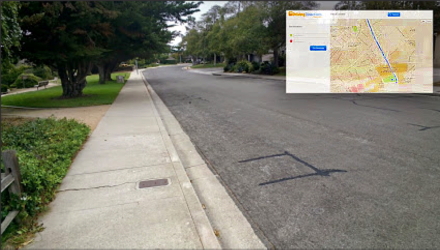Here is what we are reading today:
“”There is increasing evidence that exposure to light, during the day, particularly in the morning, is beneficial to your health via its effects on mood, alertness and metabolism,” said senior study author Phyllis Zee, M.D., a Northwestern Medicine neurologist and sleep specialist. “Workers are a group at risk because they are typically indoors often without access to natural or even artificial bright light for the entire day. The study results confirm that light during the natural daylight hours has powerful effects on health.”
Zee is the Benjamin and Virginia T. Boshes Professor of Neurology at Northwestern University Feinberg School of Medicine and director of the Sleep Disorders Center at Northwestern Memorial Hospital.”
“However, new research led by Michigan State University psychology professor David Z. Hambrick suggests that, unfortunately for many of us, success isn’t exclusively a product of determination — that despite even the most hermitic practice routine, our genes might still leave greatness out of reach.”
“Jia-huai Wang, PhD, who led the work at Dana-Farber and Peking University in Beijing, is a corresponding author of a report published in the August 7 online edition of Neuron that explains how one guidance protein, netrin-1, can either attract or repel a brain cell to steer it along its course. Wang and co-authors at the European Molecular Biology Laboratory (EMBL) in Hamburg, Germany, used X-ray crystallography to reveal the three-dimensional atomic structure of netrin-1 as it bound to a docking molecule, called DCC, on the axon of a neuron. The axon is the long, thin extension of a neuron that connects to other neurons or to muscle cells.”
“Last month, a great white shark nearly killed a surfer off the California coast. Stopping such attacks is tricky: Slaying sharks angers environmentalists, and, according to research, it doesn’t actually reduce the attack rates. Shark nets, meanwhile, kill large numbers of by-catch, such as dolphins, seals, manatees, rays, turtles, and birds. So officials in Recife, Brazil, sought another solution to address the abnormally high numbers of shark attacks—55 incidents resulting in 19 deaths between 1992 and 2011—along a 20-kilometer stretch of the country’s shoreline.”
“”Uric acid may play a direct, causative role in the development of metabolic syndrome,” said first author Brian J. DeBosch, MD, PhD, an instructor in pediatrics. “Our work showed that the gut is an important clearance mechanism for uric acid, opening the door to new potential therapies for preventing or treating type 2 diabetes and metabolic syndrome.”
Recent research by the paper’s senior author, Kelle H. Moley, MD, the James P. Crane Professor of Obstetrics and Gynecology, and her collaborators has shown that a protein called GLUT9 is an important transporter of uric acid.”
“Writing in the August 7 early online edition ofNeuron, lead scientist Paul Lu, PhD, of the UC San Diego Department of Neurosciences and colleagues said the human iPSC-derived axons extended through the white matter of the injury sites, frequently penetrating adjacent gray matter to form synapses with rat neurons. Similarly, rat motor axons pierced the human iPSC grafts to form their own synapses.
The iPSCs used were developed from a healthy 86-year-old human male.”
“”We are finding that developmental pathways that appear to be quiescent during adulthood are transiently reactivated to allow new memory formation to occur,” says Kerry Ressler, MD, PhD, professor of psychiatry and behavioral sciences at Emory University School of Medicine and Yerkes National Primate Research Center, and senior author of the paper.
The first author of the paper is postdoctoral fellow Brian Dias, PhD, and co-authors include undergraduates Jared Goodman, Ranbir Ahluwalia and Audrey Easton, and post-doctoral researcher Raul Andero, PhD.”
“If you ask a child which is the world’s fastest animal, they may tell you anything from cheetah, falcon or swift, to sailfish. If you ask a neuroscientist what is the fastest spiking neuron, you probably won’t even get an answer right away. A few might offer that the neurons that form the auditory nerve can track a sound waveform with spikes at up to 1000hz—for a little while at least. Others might note that cells in several brainstem complexes can blast away at over half that speed for much longer periods of time when stabilizing the eyeballs. But if you continue to press them, they might respond with the familiar manta: “fast-spiking parvalbumin-positive interneurons””
“An international team, led by Dr David Llewellyn at the University of Exeter Medical School, found that study participants who were severely Vitamin D deficient were more than twice as likely to develop dementia and Alzheimer’s disease.
The team studied elderly Americans who took part in the Cardiovascular Health Study. They discovered that adults in the study who were moderately deficient in vitamin D had a 53 per cent increased risk of developing dementia of any kind, and the risk increased to 125 per cent in those who were severely deficient.”
“Gerlinde Metz, senior author of the article, says: “We show that stress across generations becomes powerful enough to shorten pregnancy length in rats and induce hallmark features of human preterm birth. A surprising finding was that mild to moderate stress during pregnancy had a compounding effect across generations. Thus, the effects of stress grew larger with each generation.””



0 Comments